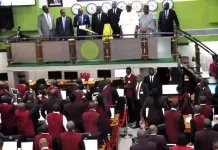In the vast and complex forex market, certain currency pairs are known for their high volatility. This presents both opportunities and risks for traders. The most volatile currency pairs usually attract a lot of attention from traders due to the potential for profit.
Understanding which currency pairs are most volatile and how to trade them is an important factor to consider for traders. In this article, we will explore the most volatile currency pairs and how to trade them. We will look at some of the popular strategies that traders are using to better trade these currency pairs.
Understanding Volatility in Forex Trading
Volatility in the forex market simply refers to the degree of variation of a currency pair’s price over time. Highly volatile currency pairs experience larger price swings within a given period. Traders can capitalize on these price shits to earn a profit. However, increased volatility provides traders with increased profit potential but also heightened risk. Traders usually use a plethora of tools to stay ahead of the market and price shifts. TradingView is one of the most popular technical and fundamental analysis tools in the market today. The list of TradingView platforms features companies that are rightfully popular among investors. Volatility is influenced by various factors, including economic indicators, geopolitical events, and market sentiment. So which are the most volatile currency pairs in the market? Let’s take a look.
AUD/JPY (Australian Dollar/Japanese Yen)
The AUD/JPY is one of the most volatile currency pairs in the market. This is influenced by economic developments in both Australia and Japan. Traders often find opportunities in the interest rate differentials between the two countries, as well as shifts in commodity prices. This particularly applies to the prices of gold and copper, which can impact the Australian economy. Traders usually consider the Japanese Yen to be a safe-haven currency due to the country’s low-interest rates. Traders usually trade this currency pair because the Tokyo session usually overlaps with the Sydney session.
Trading Strategy for AUD/JPY
Traders usually exploit interest rate differentials by going long on the currency with a higher interest rate (AUD) and short on the lower-interest currency (JPY). This strategy aims to capture the interest rate difference while benefitting from potential price movements. Of course, traders also need to stay informed about key economic indicators such as GDP growth, employment data, and inflation rates in both Australia and Japan. Unexpected changes in these indicators can trigger volatility and present trading opportunities. Various online trading brokers offer free news updates to their traders so they can keep track of such developments.
NZD/JPY (New Zealand Dollar/Japanese Yen)
Similar to AUD/JPY, NZD/JPY exhibits volatility driven by economic factors in New Zealand and Japan. The New Zealand Dollar is influenced by commodity prices, especially agricultural products which are the main exports of New Zealand. In contrast, the Japanese Yen is affected by economic indicators and global market trends and still remains more of a safe haven. Pairing the more volatile NZD with the more stable JPY creates a near-perfect match for traders.
Trading Strategy for NZD/JPY
For the NZD/JPY pair, traders usually monitor global risk sentiment. This is because the NZD/JPY tends to react to shifts in global investor risk appetite. When the market is shaky, traders tend to move more into the JPY. They tend to invest more in the New Zealand Dollar when market prices are more stable. It is wise for traders to track commodity prices, especially those related to New Zealand’s exports. Changes in commodity prices can impact the New Zealand Dollar and contribute to volatility in NZD/JPY.
GBP/EUR (British Pound/Euro)
The GBP/EUR currency pair involves two major European currencies, the British Pound against the Euro. This currency pair is influenced by economic factors such as interest rates, inflation, and political developments in both the United Kingdom and the Eurozone. After Brexit, this currency pair has seen significant volatility from time to time.
Trading Strategy for GBP/EUR
Given the UK’s decision to leave the European Union (Brexit), traders should closely follow developments related to trade agreements, economic policies, and any geopolitical events that may impact the British Pound. On top of that, traders should pay attention to interest rate differentials between the Bank of England and the European Central Bank. Interest rate expectations can drive price movements in GBP/EUR, making it essential to stay informed about central bank policies.
CAD/JPY (Canadian Dollar/Japanese Yen)
Oil is a huge contributor to the economy of Canada. Crude petroleum is the biggest export from Canada. As such, fluctuation in the prices of oil greatly influences the Canadian Dollar. When the price of the Canadian Dollar fluctuates, people tend to move towards currencies like the Japanese Yen due to their stability. As such, the movement of money between the Canadian Dollar and the Japanese Yen is common.
Trading Strategy for CAD/JPY
As Canada is a major oil exporter, fluctuations in oil prices can significantly impact the Canadian Dollar. Traders should monitor oil market trends and geopolitical events affecting oil-producing regions. On top of that, traders should Keep track of economic indicators such as employment data, GDP growth, and inflation rates in both Canada and Japan. Unexpected changes in these indicators can lead to increased volatility in CAD/JPY.
GBP/AUD (British Pound/Australian Dollar)
GBP/AUD is another volatile pair influenced by economic factors in the United Kingdom and Australia. Traders often focus on interest rate differentials, economic data, and global risk sentiment when trading this currency pair. However, there is another dynamic as the AUD is a commodity currency affected by the prices of gold and copper.
Trading Strategy for GBP/AUD
Similar to other currency pairs, interest rate differentials play a crucial role in GBP/AUD trading. Traders usually consider going long on the higher-yielding currency (GBP) and short on the lower-yielding currency (AUD) to capture interest rate differentials. Key economic indicators are also crucial to consider when trading this currency pair.
USD/ZAR (US Dollar/South African Rand)
The volatility of the USD/ZAR currency pair is mostly driven by economic factors in the United States and South Africa. Traders often focus on interest rate differentials, political developments, and commodity prices. South Africa’s economy greatly depends on the prices of commodities like gold and platinum. Changes in the prices of these commodities can lead to a stronger or weaker South African Rand.
Trading Strategy for USD/ZAR
As mentioned, staying up to date with the commodities associated with the movement of the Rand is particularly important. These will help traders better anticipate market movements. Given the interest rate differentials between the Federal Reserve (US) and the South African Reserve Bank, traders may also consider carry trading strategies to capture the interest rate spread.
USD/KRW (US Dollar/South Korean Won)
The USD/KRW currency pair involves the US Dollar and the South Korean Won. Volatility in this currency pair is common in the market, making it a popular choice for traders hunting for profit. Notably, South Korea is the United States’ sixth-largest trading partner. Its main exports include automobiles, steel, electronics, and petroleum. Any shifts in the prices of these commodities can lead to volatility of the USD/KRW pair.
Trading Strategy for USD/KRW
Traders should keep an eye on the prices of commodities like steel that represent the main exports of South Korea. They should also keep an eye on key economic indicators such as GDP growth, employment data, and inflation rates in both the United States and South Korea. Unexpected changes in these indicators can lead to increased volatility in USD/KRW.
Risk Management Strategies for Trading Volatile Currency Pairs
Regardless of the currency pair being traded, risk management is paramount to a trader’s success. Here are some essential risk management strategies for trading volatile currency pairs:
Set Stop-Loss Orders – Determine the maximum amount of loss you are willing to tolerate on a trade and set stop-loss orders accordingly. This helps protect your capital and ensures that losses are kept within acceptable limits.
Diversify Your Portfolio – Avoid concentrating all your trades on a single currency pair. Diversifying your portfolio across different pairs can help spread risk and reduce the impact of adverse movements in a particular market.
Test Strategies in a Demo Account – This is an underappreciated strategy in modern trading. Before risking real capital, test your trading strategies in a demo account. This allows you to refine your approach and gain confidence in your trading plan without incurring actual financial losses.
Final Comments
Trading the most volatile currency pairs can be a rewarding experience for skilled and informed traders. The key is to understand the unique factors driving volatility in each pair and to implement effective strategies that capitalize on market movements. By combining technical analysis, fundamental analysis, and risk management, traders can navigate volatility and potentially profit from volatile pairs. Remember that trading always involves risks, and it’s essential to approach the market with a disciplined strategy.












